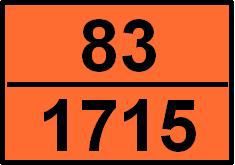-
 Allosteric regulation
Allosteric regulation
-
 Anti-androgen
Anti-androgen
-
 Ocytocin
Ocytocin
-
 Ecosystem
Ecosystem
-
 Primitive ocean
Primitive ocean
-
 Eclipse of the Moon
Eclipse of the Moon
-
 Blennorragia
Blennorragia
-
 Exo-Earth
Exo-Earth
-
 Prompt
Prompt
-
 Internal combustion hydrogen engine
Internal combustion hydrogen engine
-
 Dehnel phenomenon
Dehnel phenomenon
-
 XMM-Newton satellite
XMM-Newton satellite
-
 IATA
IATA
-
 Swaping
Swaping
-
 Eucrite
Eucrite
-
 Cardiovascular system
Cardiovascular system
-
 Oven
Oven
-
 Package
Package
-
 Allosaurus
Allosaurus
-
 MRI
MRI
-
 Gas pipeline
Gas pipeline
-
 Connectivity
Connectivity
-
 Boson
Boson
-
 Sumoylation (SUMOylation)
Sumoylation (SUMOylation)
-
 Dendritic growth
Dendritic growth
-
 Anaesthesia
Anaesthesia
-
 Saffir-Simpson Scale
Saffir-Simpson Scale
-
 Lebanon cedar
Lebanon cedar
-
 Lamellar bone
Lamellar bone
-
 Appendicitis
Appendicitis
TDG risk
Risks associated with the transportation of dangerous goods, called TDG risks, are present when an accident occurs during the road, rail or waterway transport of these substances, or during their transport through pipes (oil pipeline, gas pipeline, etc.).
The different risks of transporting dangerous goods
Four types of effects can be associated with this risk:
- explosion. Following a simple impact or an impact that produces sparks, overheating or fire exposure, dangerous materials may explode and generate a shock wave with projectiles and flames;
- fire. An impact producing sparks, overheating or accidental inflammation can set fire to combustible materials. The fire may cause much direct damage, as well as problems such as asphyxia and intoxication;
- formation of a toxic cloud. Following a leak or combustion, a cloud of toxic gas may spread and cause air pollution, soil pollution, the contamination of agricultural products and the development of diseases (e.g. irritation, pulmonary oedema);
- leak of a pollutant liquid. The breach of the confinement barrier for chemical substances may result in a leak and soil or water pollution. Supplies of drinking water, water based activities (e.g. fishing, aquaculture, swimming) and ecosystems may then be compromised.
TDG risks: regulation
Consequently, all vehicles that transport dangerous products must display signs that provide information on their cargo. Preventive measures (traffic restrictions, training of drivers) and intervention programmes in the event of an accident complete the system for combating TDG risks.

A sign indicating that a vehicle is transporting dangerous goods. The upper figure indicates the nature of the danger (here corrosive, then inflammable) and the lower figure represents the material's identification number. © DR
Latest
Fill out my online form.



